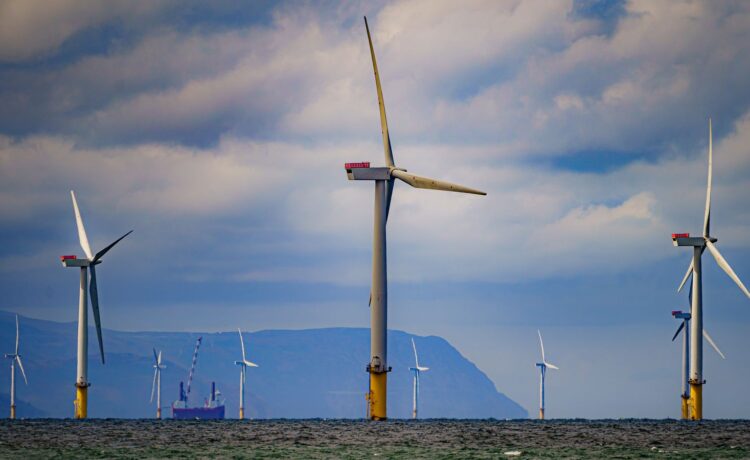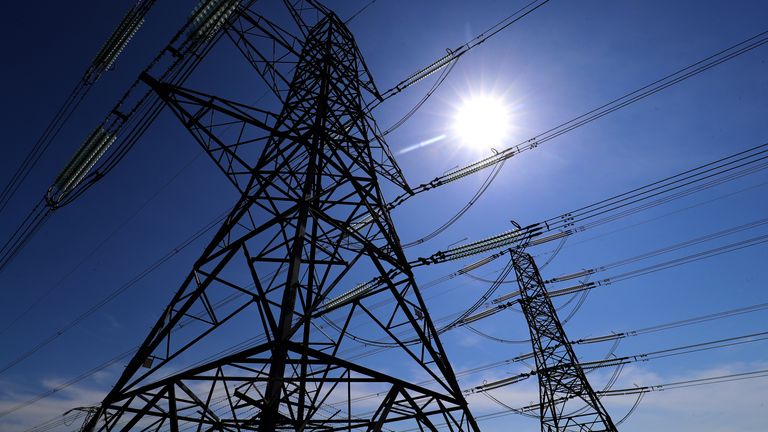The biggest electricity grid investment in British history has been approved, paving the way for an electricity superhighway, the energy regulator announced.
The £3.4bn project will transport energy from Scotland to Yorkshire, helping support offshore wind development and powering two million homes and businesses for an hour, regulator Ofgem said.
Money blog: Heinz urged to bring back classic snack
It will comprise 436 kilometres of undersea cable and will cost £4.3bn when inflation is factored in.
At the moment energy producers are paid to stop creating electricity during times when there is too much traffic on the network but this grid expansion will reduce the need for power-down requests, saving £1.5bn over the first five full years of operation from 2029.
Building the grid of the future
New infrastructure like the superhighway, called Eastern Green Two, is needed to develop a national electricity grid that moves electricity from where it’s produced – often off the coast of Scotland – to densely populated areas where it’s mostly consumed.
Read more
Why electricity pylons in Essex are the front line in the net-zero battle
£10m spent on Euros final beer
Before renewable electricity production began, electricity was generated from fossil fuel-powered plants located near coal fields in the Midlands.
The superhighway is just the first of 26 “critical” energy projects in Ofgem’s fast-track funding process for offshore wind. A second project Eastern Green One received provisional approval and is expected to be approved in the coming weeks.
Under expedited funding plans Ofgem said it can sign off on necessary grid investments by two years more quickly than other infrastructure proposals.
The chief executive of Ofgem Jonathan Brearley said: “Streamlining the process does not mean blank cheques for developers as we are able to step in and make financial adjustments to maximise efficiency and consumer benefit.”
The Labour government has a target of making Britain a clean energy superpower by 2030 and reducing reliance on gas markets, something that necessitates grid updates.
“Today’s announcement is a further step in putting the regulatory systems and processes in place to speed up network regulation to achieve its aim,” Mr Brearley added.
Nearly £60bn is needed to build the energy grid of the future in order to meet climate change mitigation milestones in just over 10 years, the National Grid said in March.
Grid projects could support “thousands of good jobs”, according to industry minister Sarah Jones.
“It forms part of our plan to reduce our reliance on fossil fuel imports so we can protect billpayers, boost Britain’s energy independence and accelerate our path to net zero.”


















